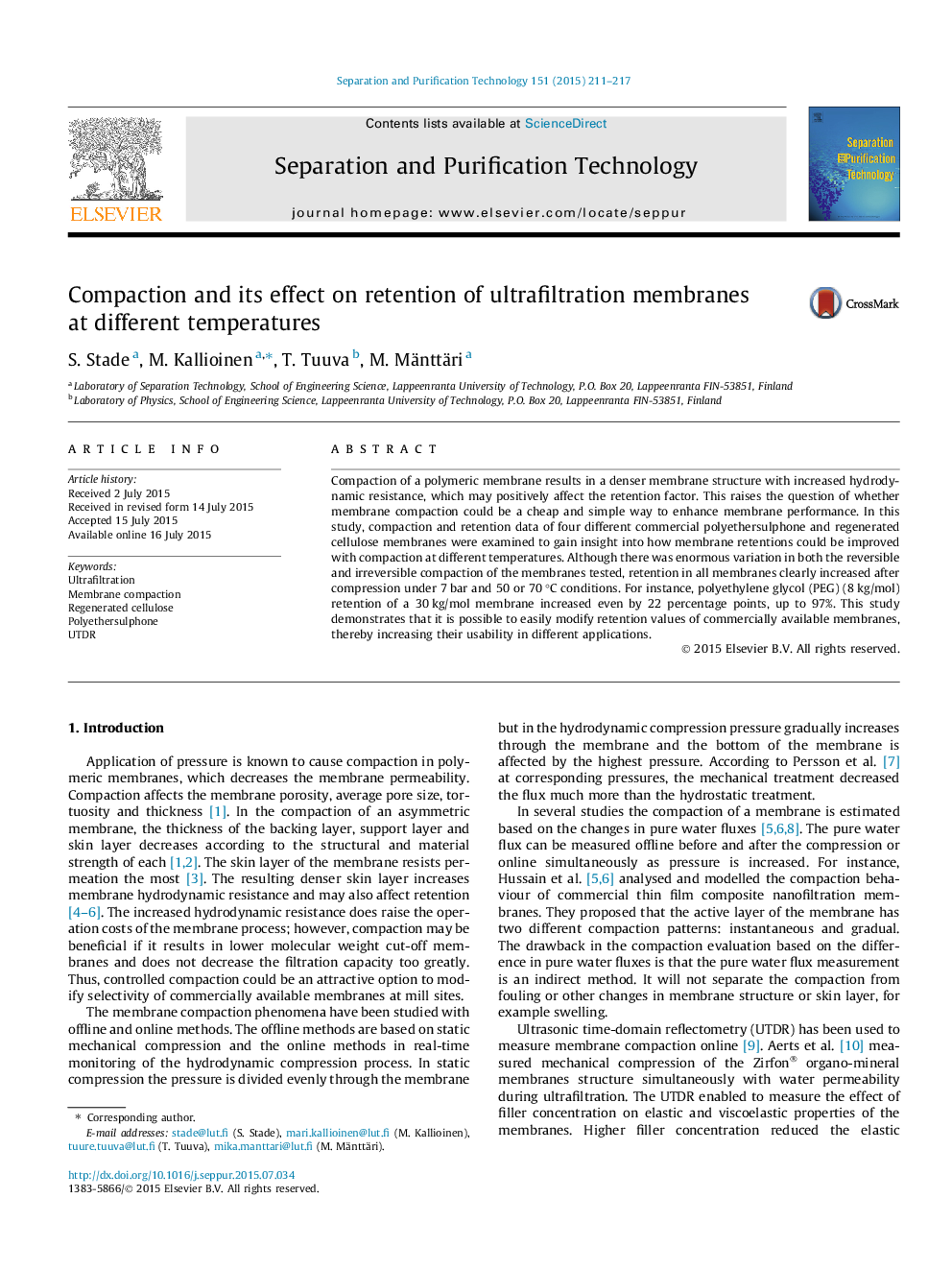| Article ID | Journal | Published Year | Pages | File Type |
|---|---|---|---|---|
| 640428 | Separation and Purification Technology | 2015 | 7 Pages |
•Even 22 percentage points increase in retention was achieved by precompaction.•Only small increase in pressure was needed to compensate the caused capacity decrease.•Cellulose membrane structure effects significantly on irreversibility of compaction.•Compaction of all the tested membranes was not affected by temperature increase.
Compaction of a polymeric membrane results in a denser membrane structure with increased hydrodynamic resistance, which may positively affect the retention factor. This raises the question of whether membrane compaction could be a cheap and simple way to enhance membrane performance. In this study, compaction and retention data of four different commercial polyethersulphone and regenerated cellulose membranes were examined to gain insight into how membrane retentions could be improved with compaction at different temperatures. Although there was enormous variation in both the reversible and irreversible compaction of the membranes tested, retention in all membranes clearly increased after compression under 7 bar and 50 or 70 °C conditions. For instance, polyethylene glycol (PEG) (8 kg/mol) retention of a 30 kg/mol membrane increased even by 22 percentage points, up to 97%. This study demonstrates that it is possible to easily modify retention values of commercially available membranes, thereby increasing their usability in different applications.
